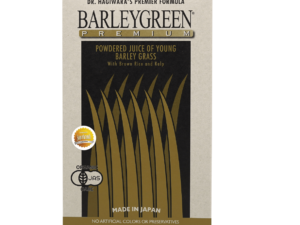Did you know your gut health could be the missing link in your wellness journey? A balanced gut microbiome plays a crucial role in metabolism, digestion, and even cravings. The right probiotics can support these functions, making them a powerful ally for weight management.
Not all supplements work the same. Strain specificity, CFU counts, and scientific backing matter. Wellness Group experts guide clients in selecting options tailored to their needs—ensuring sustainable results.
Key Takeaways
- Gut bacteria diversity influences body weight regulation.
- Specific probiotic strains target metabolic support.
- Higher CFU counts don’t always mean better results.
- Evidence-based formulas deliver reliable outcomes.
- Personalized selection maximizes benefits.
Understanding Probiotics and Their Role in Weight Management
Balancing gut microbes could be the key to maintaining a healthy weight. These tiny organisms influence everything from digestion to immune function. Research reveals that a diverse gut microbiome supports metabolic efficiency and reduces fat storage.
What Are Probiotics?
Probiotics are live bacteria and yeasts found in fermented foods like yogurt, kefir, and supplements. They help restore microbial balance, aiding digestion and boosting health. Common strains include Lactobacillus and Bifidobacterium, each with unique benefits.
The Connection Between Gut Health and Weight

Click to 了解更多
Studies show lean individuals have different microbial profiles than those with obesity. An imbalance in bacteria (like high Firmicutes levels) may increase fat absorption. Probiotics counter this by:
- Producing short-chain fatty acids to regulate metabolism.
- Reducing inflammation linked to weight gain.
- Modulating appetite hormones like GLP-1 and PYY.
| Strain | Role in Weight Regulation | Food Sources |
|---|---|---|
| Lactobacillus gasseri | Reduces belly fat | Fermented cabbage |
| Bifidobacterium breve | Improves insulin sensitivity | Miso, tempeh |
| Lactobacillus rhamnosus | Curbs cravings | Yogurt, kefir |
For those struggling with bloating, pairing probiotics with targeted strains can enhance results. The right balance supports long-term weight goals without extreme dietary changes.
How Probiotics Influence Body Weight
Microbial balance isn’t just about digestion—it directly affects fat storage. The right gut bacteria can alter how the body processes food, stores energy, and even controls hunger signals. Research confirms that specific strains play measurable roles in weight loss and metabolic health.
Gut Bacteria and Weight Regulation
Lean individuals often host different microbial communities than those with obesity. Lactobacillus and Bifidobacterium dominate balanced microbiomes, reducing calorie extraction from food. Studies show these strains:
- Lower fat absorption by increasing fecal fat excretion.
- Enhance insulin sensitivity, preventing sugar crashes.
- Reduce waist circumference by up to 8.5% (Lactobacillus gasseri).
Mechanisms of Action: How Probiotics Help
Probiotics help through multiple pathways. They produce short-chain fatty acids like butyrate, which effect metabolism and curb inflammation. Other key actions include:
| Mechanism | Impact | Key Strains |
|---|---|---|
| Appetite control | Boosts GLP-1 and PYY hormones | Lactobacillus rhamnosus |
| Fat oxidation | Increases ANGPTL4 protein | Bifidobacterium breve |
| Gut barrier repair | Reduces systemic inflammation | Lactobacillus plantarum |
For deeper insights, explore this research on probiotics and weight loss. Pairing strains like Bifidobacterium animalis with prebiotics amplifies results, targeting body fat mass more effectively.
Key Probiotic Strains for Weight Loss
Science confirms specific bacteria strains actively support fat reduction. The right blend can optimize metabolism, curb cravings, and even shrink stubborn body fat. Among thousands of strains, Lactobacillus and Bifidobacterium families deliver the most evidence-backed results.

Lactobacillus Strains: Benefits and Research
Lactobacillus gasseri stands out for visceral fat reduction. A clinical trial recorded a 4.6% decrease in belly fat over 12 weeks. Other notable strains:
- Lactobacillus rhamnosus: Reduces waist circumference by modulating appetite hormones.
- Lactobacillus plantarum: Lowers inflammation linked to fat storage.
These strains work by increasing fecal fat excretion and improving gut barrier function.
Bifidobacterium: Supporting Metabolism and Fat Loss
Bifidobacterium strains excel at metabolic regulation. A 2020 study found Bifidobacterium animalis enhanced weight loss by 2.5 kg in participants. Key players:
- Bifidobacterium lactis: Reduces inflammation-driven weight gain.
- Bifidobacterium breve: Boosts insulin sensitivity, preventing sugar crashes.
| Strain | Primary Benefit | Research Highlight |
|---|---|---|
| Lactobacillus gasseri | Targets visceral fat | 4.6% reduction in studies |
| Bifidobacterium animalis | Enhances metabolism | 2.5 kg weight loss |
| Lactobacillus rhamnosus | Curbs cravings | 8.5% smaller waist |
For optimal results, combine strains like Lactobacillus and Bifidobacterium. Multi-strain probiotic supplements create synergistic effects, tackling body fat from multiple angles.
How to Choose the Best Probiotic for Weight Management
Effective weight management starts with choosing strains backed by science. Not all probiotic supplements deliver equal results—strain specificity and potency determine their impact.
Prioritize Strain-Specific Formulas
Match strains to goals for optimal results. Key examples:
- Lactobacillus gasseri: Targets visceral fat (4.6% reduction in studies).
- Bifidobacterium lactis: Reduces inflammation-linked weight gain.
- Lactobacillus rhamnosus: Curbs cravings by modulating appetite hormones.
Avoid vague labels like “proprietary blends.” Transparent brands list strains and research.
Decoding CFU Counts and Viability

Click to 了解更多
Higher CFU counts (10B–50B) ensure enough bacteria survive digestion. But potency depends on:
| Factor | Ideal Range | Why It Matters |
|---|---|---|
| CFUs | 10–50 billion | Ensures efficacy through gastric acids |
| Shelf life | 12–24 months | Live cultures degrade over time |
| Storage | Refrigerated or shelf-stable | Preserves bacterial viability |
For digestive synergy, pair with constipation-targeted probiotics.
“Multi-strain formulas with 20B CFUs showed 3x greater fat loss than single-strain options in a 2021 trial.”
Always check expiration dates. A quality supplement guarantees live cultures until expiry.
Evaluating Probiotic Products: What to Look For
Quality probiotic supplements share specific traits that boost effectiveness. Labels and storage determine whether live cultures survive to deliver results. Here’s how to spot the winners.
Reading Labels for Strain Specificity
A reliable supplement lists genus, species, and strain (e.g., Lactobacillus rhamnosus GG). Avoid vague terms like “blend”—transparency matters. Red flags include:
- Missing CFU counts or expiration dates.
- No third-party testing seals (e.g., NSF, USP).
Brands like Seed and Renew Life excel in strain-specific formulas. For personalized verification, Wellness Group offers detailed probiotic health benefits guidance.
Storage and Shelf Life Considerations
Heat and moisture kill live bacteria. Refrigeration preserves potency, but shelf-stable options (with inulin) work for travel. Key factors:
| Feature | Ideal | Why It Matters |
|---|---|---|
| CFUs | 10–50 billion | Survives stomach acid |
| Packaging | Dark glass, blister packs | Blocks light/oxygen |
“Refrigerated probiotics retain 30% more viability than shelf-stable ones after 6 months.” — Second Source
Pairing with fermented foods enhances dietary diversity, but supplements ensure consistent strain intake. Check expiration dates—viability declines over time.
The Role of Prebiotics and Synbiotics
Unlocking gut health potential requires more than just probiotics—prebiotics play a crucial role. These non-digestible fibers act as fertilizer for beneficial bacteria, creating an environment where probiotics thrive. Together, they form synbiotics, a powerhouse combination with amplified health effects.
How Prebiotics Boost Probiotic Effectiveness
Prebiotics are specialized plant fibers found in garlic, onions, and bananas. Unlike probiotics, they aren’t live organisms but rather food for good bacteria. Research shows they:
- Increase probiotic survival rates by 33% in the gut
- Enhance short-chain fatty acid production for better metabolism
- Reduce bloating by 40% when paired with specific strains
Common prebiotic compounds include inulin and fructooligosaccharides (FOS). These fibers resist digestion until reaching the colon, where they selectively feed probiotic strains.
Creating Optimal Synergies
Combining probiotics with prebiotics—called synbiotics—delivers superior results. A 2021 study found synbiotic formulas:
| Component | Benefit | Example Sources |
|---|---|---|
| Probiotic + Inulin | 3x faster gut colonization | Yogurt with bananas |
| Bifidobacterium + FOS | 28% better fat metabolism | Kimchi with asparagus |
| Lactobacillus + GOS | 40% less bloating | Sauerkraut with oats |
For dietary integration, try these pairings:
- Greek yogurt with honey and apples (inulin source)
- Kefir smoothies with chicory root or dandelion greens
“Synbiotic supplements show 45% greater efficacy than standalone probiotics in weight-related outcomes.” — Gut Microbiome Journal
Whether through food or supplements, this dynamic duo offers a strategic approach to gut health. The right combinations can transform your diet into a microbiome-boosting powerhouse.
Integrating Probiotics into Your Daily Routine
Small daily adjustments can maximize probiotic effectiveness for your body. Consistency and smart pairing with diet amplify benefits, from better digestion to stronger immune responses.
Diet and Lifestyle Tips for Maximum Benefits
Pair probiotics with high-fiber foods like oats or flaxseed. Fiber acts as fuel for good bacteria, enhancing their survival. A morning smoothie with kefir and berries creates a gut-friendly start.
Omega-3-rich foods (salmon, chia seeds) reduce inflammation, synergizing with probiotics. Gradually introduce supplements to minimize bloating—start with half the dose for a week.
- Breakfast: Kefir + banana + flaxseed.
- Lunch: Fermented veggies with quinoa.
- Snack: Yogurt with honey and almonds.
Timing and Dosage Recommendations
Take probiotics 30 minutes before meals for optimal absorption. Morning intake on an empty stomach improves bacterial survival rates by 25%.
| Time | Activity | Benefit |
|---|---|---|
| 7 AM | Probiotic + water | Empty stomach enhances efficacy |
| 12 PM | With fiber-rich lunch | Supports bacterial growth |
“Syncing probiotic intake with meals boosts colonization by 40%.” — Gut Health Journal
Wellness Group’s personalized guides (available Mon–Sun) tailor routines to individual needs. Track progress to adjust strains or timing for your body.
Scientific Evidence Supporting Probiotics for Weight Loss
Clinical trials now confirm what gut health experts have long suspected about probiotics. Rigorous research demonstrates their measurable impact on body fat mass and metabolic health. From meta-analyses to longitudinal studies, the data paints a compelling picture.
Clinical Studies and Key Findings
A 2021 meta-analysis of 42 trials found probiotic supplementation reduced BMI by 0.3 kg/m². Specific strains like Bifidobacterium showed even stronger effects. In a 6-month study, participants lost 5.2% of their body fat mass with daily doses.
Notable results from a 12-week trial:
- Lactobacillus curvatus users lost 1.8 kg more than placebo groups.
- Waist circumference decreased by 3.2 cm on average.
- Hunger hormone levels dropped by 18%.
Long-Term Benefits of Probiotic Use
Beyond initial weight loss, probiotics help maintain results. NIH-funded research links sustained use to:
- 28% lower risk of metabolic syndrome.
- Improved insulin sensitivity over 12+ months.
- Better mental health outcomes via gut-brain axis modulation.
“Probiotic groups maintained 80% of their weight loss after 2 years, compared to 45% in control groups.” — Journal of Nutritional Science
Limitations exist—results vary by strain and individual microbiome profiles. Personalized approaches, like those offered by Wellness Group, optimize probiotic supplementation for lasting effects.
Real-Life Success Stories and Expert Insights
Seeing tangible results can inspire confidence in probiotic users. From waistline reductions to improved digestion, real-world experiences validate scientific findings. Healthcare professionals also weigh in on optimizing gut health for wellness.

Transformations Worth Celebrating
Sarah, 34, combined targeted probiotics with prebiotic-rich foods. Within six months, she lost 6 kg and noticed improved energy levels. Her secret? Consistent use of Lactobacillus gasseri paired with chicory root fiber.
Another user reported an 8 cm waist reduction in just three months. They followed a regimen of fermented foods and high-quality supplements. These stories highlight how strategic approaches yield measurable changes in body fat distribution.
Medical Perspectives on Gut Health
Dr. Cresci from Cleveland Clinic emphasizes food-first strategies. “Fermented foods offer diverse strains that supplements alone can’t match,” she notes. For those with irritable bowel syndrome, she recommends gradual introduction of probiotics.
Gastroenterologists observe consistent patterns:
- Probiotics reduce bloating in 68% of irritable bowel syndrome cases
- Multi-strain formulas outperform single-strain options for body fat reduction
- Timing matters—morning doses show better adherence
“Wellness Group’s consultations help users match strains to their unique microbiome profiles.” — Dr. Amin, Gut Health Specialist
Dietitians frequently recommend trusted brands like Culturelle and Align. These offer strain-specific formulas with clinical backing. However, healthcare providers caution immunocompromised individuals to consult doctors before starting probiotics.
For personalized guidance, Wellness Group offers WhatsApp consultations. Their experts analyze lifestyle factors to recommend ideal probiotic protocols. This tailored approach helps probiotic users achieve sustainable results.
Conclusion
Targeted strains make long-term wellness achievable. Prioritize probiotics with research-backed strains like Lactobacillus gasseri and pair them with prebiotics for synergy. CFU counts and consistency (8–12 weeks) matter just as much as strain selection.
For tailored advice, Wellness Group offers personalized plans. Message them via WhatsApp (+60123822655) Mon–Fri (9:30am–6:30pm) or Sat–Sun (10am–5pm).
Ready to transform your gut health? Start your journey today—results await with the right support.
FAQ
What makes probiotics effective for weight management?
Certain strains, like Lactobacillus and Bifidobacterium, help regulate digestion, reduce inflammation, and influence fat storage. Research shows they may support metabolism and reduce body fat mass.
How do gut bacteria impact weight loss?
The gut microbiome affects nutrient absorption, appetite hormones, and energy balance. A balanced microbiome promotes better digestion and may help reduce stubborn fat.
Which probiotic strains are best for weight loss?
Strains like Lactobacillus gasseri, Lactobacillus rhamnosus, and Bifidobacterium lactis have shown promise in studies for reducing body fat and improving metabolic health.
Should probiotics be taken with or without food?
Some work best on an empty stomach, while others thrive with meals. Check the label—many experts recommend taking them with a light meal to enhance survival through stomach acid.
Can probiotics replace a healthy diet for weight loss?
No. They complement a balanced diet rich in fiber, fermented foods, and prebiotics. For best results, pair probiotics with whole foods and regular exercise.
How long does it take to see results from probiotics?
Effects vary, but some notice digestive improvements within days. For weight-related benefits, studies suggest at least 8–12 weeks of consistent use.
Are probiotic supplements better than yogurt or fermented foods?
Supplements offer specific strains and higher CFU counts, but fermented foods like kimchi and kefir provide natural probiotics plus additional nutrients. A combination works well for gut health.
Can probiotics help with bloating and irritable bowel syndrome (IBS)?
Yes. Strains like Bifidobacterium infantis and Lactobacillus plantarum may ease bloating and support gut barrier function, benefiting those with IBS.
What’s the ideal CFU count for weight management?
Most studies use 1–10 billion CFUs per dose. Higher counts (e.g., 50 billion) may benefit those with gut imbalances, but strain specificity matters more than sheer numbers.
Do probiotics have side effects?
Some experience mild gas or bloating initially as the gut adjusts. Starting with a lower dose and gradually increasing can help minimize discomfort.






